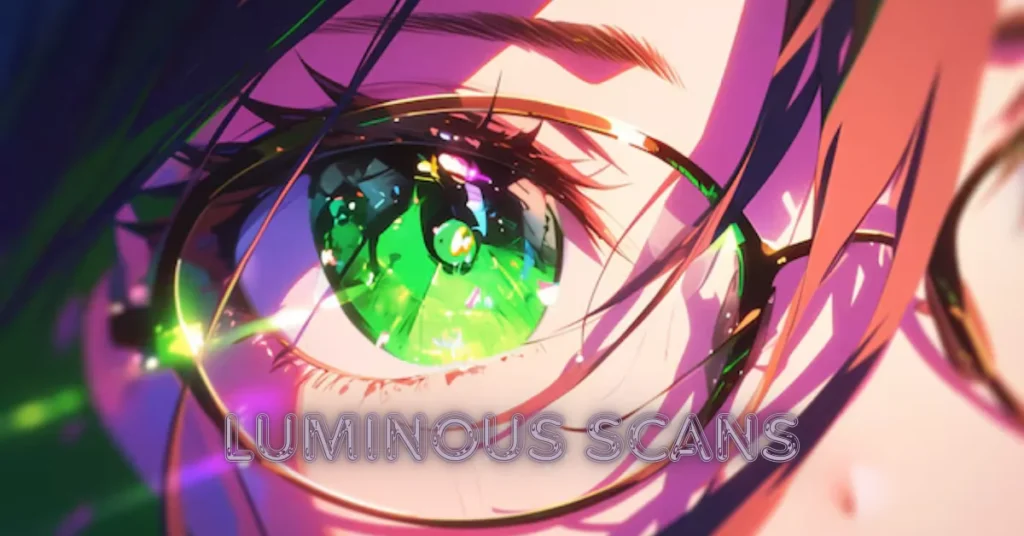Introduction to Manga and Manhwa
Manga and manhwa have become cultural phenomena, captivating audiences around the globe with their intricate artwork and compelling storytelling. From shonen adventures to slice-of-life tales, these genres offer something for everyone. But how do fans access the latest chapters of their favorite series? Enter luminous scans—a dedicated group that shines a light on this vibrant world.
Luminous scans not only bring beloved stories to life but also play a crucial role in bridging gaps between creators and enthusiasts. Scanlation has transformed the way we consume manga and manhwa, making it easier than ever to dive into new narratives or catch up on ongoing series. So what exactly is behind these luminous offerings? Let’s explore the evolution of scanlation, uncovering its artistic process, impact on communities, controversies surrounding it, and where it might be headed next. Join us as we illuminate the fascinating realms of manga and manhwa through the lens of luminous scans!
The Evolution of Luminous Scans
Luminous scans began as a grassroots effort among fans passionate about sharing their love for manga and manhwa. These early efforts were often rough around the edges, but they carried an undeniable charm.
As technology evolved, so did scanlation techniques. Scanners transitioned from simple handheld devices to high-resolution tools that enhanced image quality dramatically. This shift allowed fans to enjoy clearer, more vibrant illustrations.
With the rise of online communities, collaboration became easier. Scanlators formed teams that combined skills in translating, editing, and typesetting. The result? A polished product that appealed to even broader audiences.
The demand for timely releases fueled innovation as well. Luminous scans adapted by streamlining processes and prioritizing speed without sacrificing quality. What started as a humble hobby has transformed into a formidable presence within the manga and manhwa landscape.
Behind the Scenes: The Process of Scanlation
Scanlation is a blend of art and skill. It begins with sourcing raw manga or manhwa scans, often from Japanese publishers. These initial images are essential for creating a faithful adaptation.
Once the scans are gathered, editors step in. They clean up any imperfections or noise that may detract from the visual experience. This meticulous process requires patience and an eye for detail.
Translators work diligently alongside editors to ensure accurate dialogue flow. Understanding cultural nuances is crucial here; it’s not just about words but emotions too.
After translation, typesetters add text back into the cleaned images. This task demands creativity to maintain readability while preserving original artwork integrity.
Proofreaders verify every aspect before publication. Their role ensures that what reaches readers reflects both quality and authenticity within the vibrant world of luminous scans.
The Impact of Luminous Scans on the Manga and Manhwa Community
Luminous scans have transformed the manga and manhwa landscape significantly. They provide access to countless titles that might otherwise remain obscure or inaccessible.
Fans eagerly await new releases, fueling excitement within communities. Online discussions thrive as readers share their thoughts on characters, plot twists, and artwork.
Scanlation groups often serve as a bridge between cultures. They introduce global audiences to unique storytelling techniques and artistic styles from Japan and Korea.
Moreover, luminous scans empower indie creators by showcasing their work alongside popular titles. This exposure can lead to increased recognition and opportunities in the industry.
However, not all responses are positive. Some argue that these scans undermine official publishers’ efforts. Despite this tension, it’s undeniable that luminous scans play a pivotal role in shaping how fans engage with manga and manhwa today.
Controversies Surrounding Scanlation
Scanlation, while beloved by many fans, has its fair share of controversies. One major issue is the legality surrounding these unofficial translations. Manga publishers often view scanlation as a breach of copyright, leading to heated debates about intellectual property rights.
Another point of contention is the quality and accuracy of fan-made translations. Not all scanlators are professionals, which can result in errors or misinterpretations that affect storytelling. This inconsistency fuels arguments among readers regarding authenticity.
Moreover, some creators express concerns over how scanlations impact their revenue. When fans turn to free scans instead of purchasing official versions, it raises questions about support for artists and the industry itself.
These tensions reveal a complex relationship between creators and fans within the manga and manhwa community. Though founded on passion for storytelling, this art form continues to navigate challenging waters as it evolves alongside technology and audience expectations.
Future of Luminous Scans and Scanlation in General
The future of luminous scans is unfolding in fascinating ways. As technology advances, the process of scanlation becomes more efficient. High-definition scanning and advanced editing software allow for sharper images and cleaner translations.
With increasing demand for accessibility, more platforms are embracing digital manga and manhwa. This shift could reshape how fans engage with their favorite series. Traditional publishers may need to adapt or risk losing loyal readers who seek timely updates from scanlation groups.
Moreover, collaborations between official sources and fan communities might emerge. These partnerships can bring together the best elements of both worlds—authenticity from creators combined with passionate fan engagement.
As legal avenues expand, there’s hope that luminous scans will coexist alongside official releases. This would create a richer landscape where all forms of storytelling are celebrated without overshadowing one another. The community remains vibrant as enthusiasts continue to support their beloved genres in innovative ways.
Conclusion: Appreciating the Art of Manga and Manhwa Through Scanlation
The world of manga and manhwa is vast, rich in stories and artistry that resonate with readers globally. Luminous scans play a pivotal role in bridging the gap between creators and fans. By translating these works, they foster a sense of community among enthusiasts who share a passion for unique storytelling.
Scanlation isn’t just about translation; it’s an art form that requires skill and dedication. It allows audiences to experience narratives that might otherwise remain inaccessible due to language barriers or regional restrictions. The hard work behind luminous scans illuminates the creativity embedded within each panel, inviting readers into diverse worlds filled with emotion.
As we navigate through this digital age, it’s essential to recognize both the benefits and challenges of scanlation. While controversies exist around copyright issues, there’s no denying how these efforts enhance appreciation for manga and manhwa culture. They offer exposure to lesser-known titles while supporting underground artists striving for recognition.
With technology advancing rapidly, it will be interesting to see how luminary groups like Luminous Scans adapt over time. Will they continue thriving alongside official releases? Or will new platforms emerge that change the landscape once again?
Embracing the journey through luminous scans helps us appreciate not only our favorite series but also those passionate individuals dedicated to sharing them with us all.
FAQs
1. What is Luminous Scans?
Luminous Scans is a dedicated group specializing in scanlation, which involves translating and editing manga and manhwa for fans around the world. They bridge the gap between Japanese and Korean creators and global readers by providing high-quality, timely translations of popular series.
2. How has Luminous Scans evolved over time?
Luminous Scans started as a grassroots effort among manga and manhwa enthusiasts. Over time, advancements in technology and online collaboration have allowed them to enhance the quality of their translations and streamline their processes, resulting in clearer images and more accurate translations.
3. What is the process behind scanlation?
Scanlation involves several steps: sourcing raw scans, cleaning and editing images, translating dialogue, typesetting text into the artwork, and proofreading the final product. Each step requires careful attention to maintain both the quality of the artwork and the accuracy of the translation.
4. How do Luminous Scans impact the manga and manhwa community?
Luminous Scans provide access to a wide range of manga and manhwa titles that might not otherwise be available internationally. They foster community discussions and introduce global audiences to diverse storytelling styles, while also supporting indie creators by showcasing their work.
5. What are the main controversies surrounding scanlation?
Controversies include issues of legality, as scanlation often involves unauthorized translations that can conflict with copyright laws. Additionally, there are concerns about the quality of fan translations and their impact on official publishers and creators’ revenues.







